1) You can stay in majestic castles and forts...
Why book a hotel when you can bunk up in your own medieval fortress? Experience a piece of Tudor history at Kingswear Castle, one of the first fortifications in the country built for cannon. You can form your own raiding party along the beach and venture into Dartmouth and visit its quintessentially English harbour.
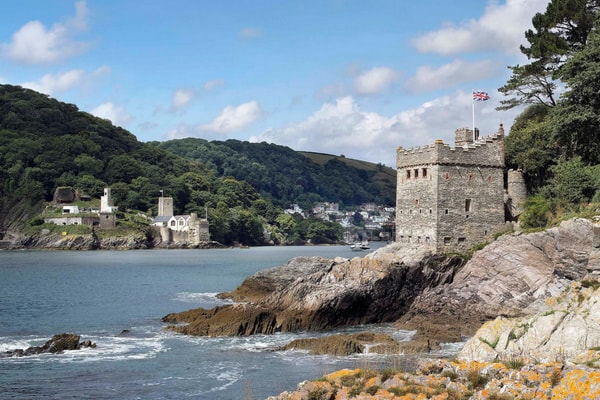 Kingswear Castle in Dartmouth
Kingswear Castle in Dartmouth
If that is too close to civilisation, then make the trek up to Saddell Castle in Kintyre, Scotland. This Scottish tower house was built in the early 16th-century by the Bishop of Argyll, who was granted the lands of Saddell by King James IV. It stands right on the beach with spectacular views of Kintyre and the Isle of Arran from every window. For the best view, climb up to the battlements and look for the shy otters.
Military buffs will love Martello Tower, a quatrefoil shaped building on the beach built in the early 19th-century to deter Napoleon. Behind the million bricks that make up its imposing exterior lies a surprisingly cosy interior, with a huge canopy over the main living space to keep out the elements. Or make an expedition to Fort Clonque on the Channel Islands – this sprawling mid-Victorian fortress sleeps 13 and can only be reached by causeway and drawbridge.
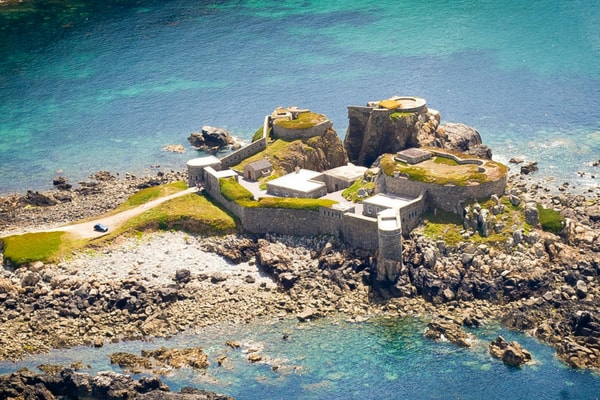 Fort Clonque on the Channel Islands
Fort Clonque on the Channel Islands
Book a break in a castle or fort
2) ...or explore the British countryside from a cottage
There’s nothing more British than a cottage. Think thatched roofs and cosy fireplaces. Our cottages come in all shapes and sizes in all manner of locations – perched on towering cliffs, nestled in the woods or on a peaceful stretch of canal. All are ideally placed to explore marvellous stretches of rural Britain.
Causeway House is a thatched wonder just a few hundred yards away from the Roman fort of Vindolanda on Hadrian’s Wall. It is the only house in Northumberland still thatched in heather (“black thack”) - you can sleep in the loft under the knotted tent-like thatch in a fully roofed bed.
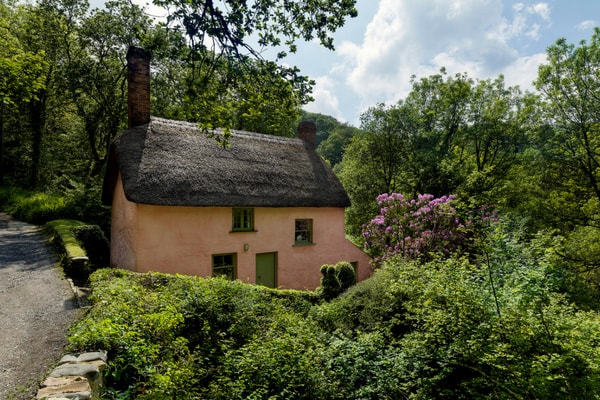 Bridge Cottage in Peppercombe
Bridge Cottage in Peppercombe
Further down south is the chocolate-box Bridge Cottage in North Devon, which stands in a wood next to a path that leads down to a stony deserted beach. More modern is the early 20th-century Hanmers on Lundy Island. This fisherman’s cottage sits in a dip in the hill on the cliffs, commanding stunning views towards Devon while being sheltered against the elements.
Book a break in a cottage or farm
3) Live in British history
All of our buildings have a special place in British history. Mary Queen of Scots was imprisoned at Staffordshire’s Tixall Hall in 1586 for her role in the Babington Plot. “I have nothing for you,” she said to local beggars, weeping through Tixall Gatehouse. “I am a beggar as well as you, all is taken from me.” Tixall Hall is long gone but the Gatehouse lives on – we have restored it as a comfortable Landmark for six.
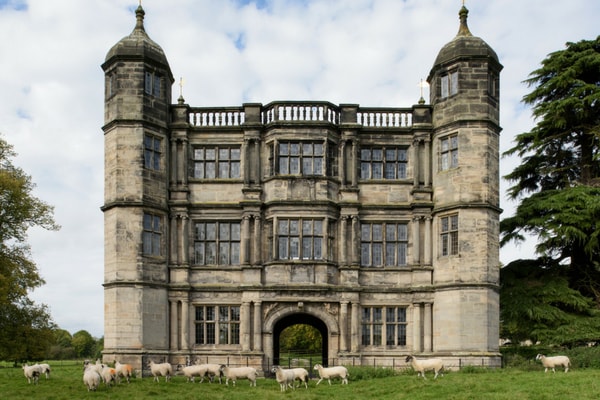 Tixall Gatehouse near Stafford
Tixall Gatehouse near Stafford
A generation earlier, Cardinal Wolsey was dramatically arrested for treason on Henry VIII’s orders at Cawood Castle, the principal palace of the Archbishops of York. Wolsey had failed to secure a divorce that would allow Henry VIII to marry Anne Boleyn and he retreated to Cawood in disgrace – a year later, he was arrested. Henry himself stayed at the castle several years later with his wife Catherine Howard (accompanied by her lover, Thomas Culpeper). You too can sleep like royalty in Cawood Castle with its grand four-poster bed and magnificent views of the Yorkshire countryside.
The story of Britain isn’t just about kings and queens. The fairy-tale Hole Cottage is the remains of a sophisticated yeoman’s house, tucked away in a wood where generations of charcoal burners and bodgers would have worked. The Shore Cottages on the brink of Scotland represent a complete survival of a mid 19th-century coastal salmon fishing station. And Coed y Bleiddiau – a tiny Welsh cottage on the Ffestiniog Railway – was built for the railway Superintendent in 1863.
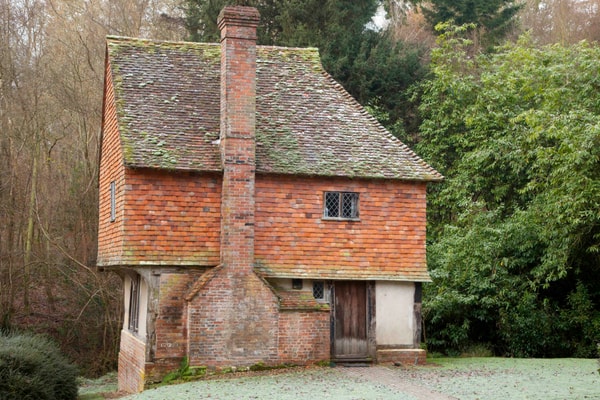 Hole Cottage in Cowden
Hole Cottage in Cowden
4) Quirky buildings
Britain’s built heritage is full of wonderful oddities. The Pineapple near Stirling, Scotland is a fruit-topped summerhouse, built by Lord Dunmore, the last royal Governor of Virginia. Sailors returning home would stick a pineapple on their gateposts to tell the community they were back – from this, pineapples became very popular as architectural decoration.
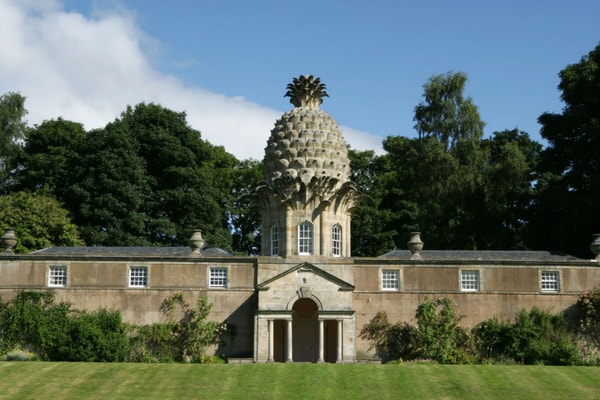 The Pineapple near Airth
The Pineapple near Airth
Perhaps the poshest pigsty in the country takes your fancy. A tour of the Mediterranean inspired Squire Barry of Fyling Hall to build a classical pigsty for his pigs on his return to North Yorkshire in the 1880s. Today the sty is a perfect base to explore ‘God’s Own Country’, perched on a hill overlooking the sea at Robin Hood’s Bay.
In Norfolk, a Victorian water tower has been converted into a stunning Landmark for four. From the terrace on top of the tank and from the room below, there is a view on all sides over miles of wide-open landscape. This is your own nest within the treetops on the Sandringham Estate, the private home to four generations of British monarchs since 1862.
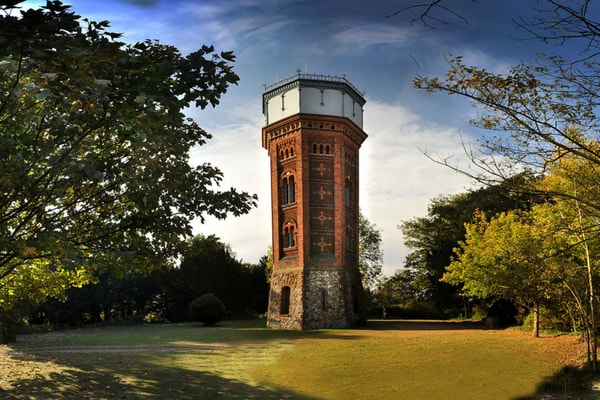 Appleton Water Tower in Sandringham
Appleton Water Tower in Sandringham
Explore more unusual holidays
5) The best of British craft
When restoring a building, we are determined that our craftsmanship and materials should be first-rate and appropriate to the standards of the original construction. We employ both specialist contractors and our own small team of craftspeople in the skilled work of repairing and renovating a building. They have myriad skills such as leadworking, carpentry, thatching and lime plastering. Our craft apprentice Bill Barkley has contributed to many of Landmarks projects and our kitchens are made by hand at our workshop in the Cotswolds.
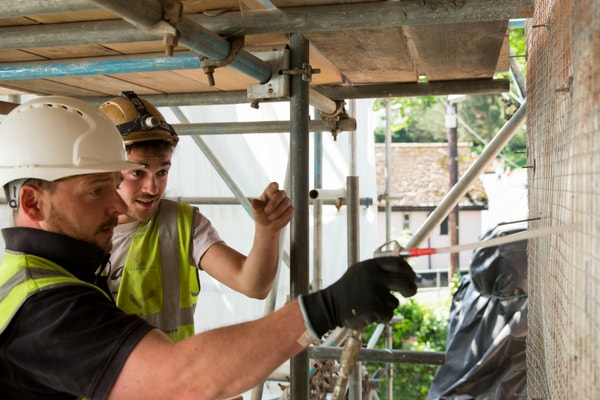 Members of our crafts team on site
Members of our crafts team on site
Our interiors are designed to be both elegant and simple. The pictures, printed textiles, furniture and decorative details are chosen to bring out the character of the building. “It shouldn’t feel ‘designer done’” says our Furnishing Manager John Evetts. “I don’t want people to feel they have to tiptoe around it, or that the decoration jars with the age of the building.”
Need further inspiration? Click the red button below to browse nearly 200 beautiful historic buildings - all available for short breaks.
Explore all of our Landmarks
Keep up with the latest Landmark news and offers
Sign up and receive information about:
- holidays in historic buildings
- building rescue projects
- key dates for advance bookings of our most popular Landmarks
- the latest Landmark news